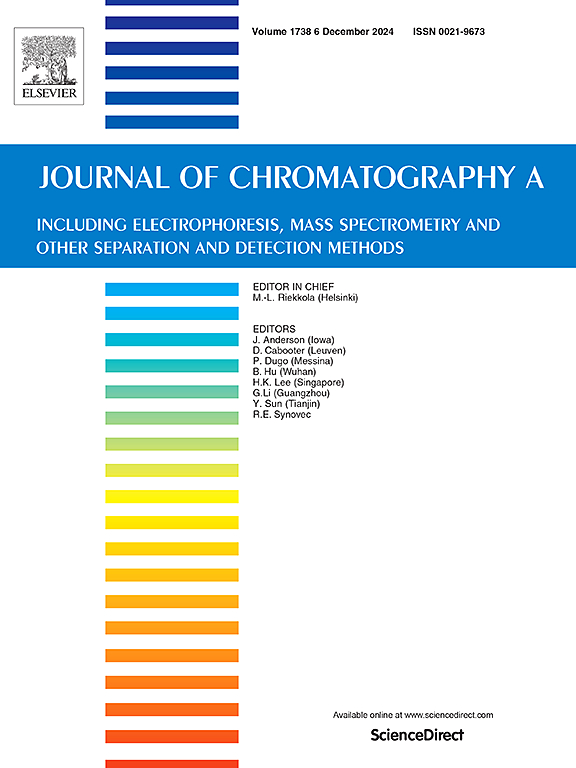Phenylboronic acid functionalized magnetic ferroferric oxide nanoparticles and capillary electrophoresis for efficient isolation of flavonoid compounds from leaves of Lonicera japonica Thunb
IF 3.8
2区 化学
Q1 BIOCHEMICAL RESEARCH METHODS
引用次数: 0
Abstract
Flavonoids are bioactive components in natural products, which possess anti-inflammatory, antibacterial, antioxidant, and cardiovascular protective properties. However, due to the complexity and low content of the components in these samples, developing rapid and sensitive methods for the isolation and extraction of flavonoids still remains a challenge in medical and food science. Herein, a 4-formylphenylboronic acid functionalized magnetic Fe3O4 nanomaterial (Fe3O4@FPBA) was synthesized and applied as a sorbent of magnetic solid-phase extraction (MSPE) to covalently extract flavonoids from leaves of Lonicera japonica Thunb.. The structure, morphology and magnetic properties of Fe3O4@FPBA particles were characterized by fourier transform infrared spectroscopy (FT-IR), X-ray diffraction (XRD), vibrating sample magnetometer (VSM) and scanning electron microscope (SEM) technologies. Employing luteoloside, luteolin, lonicerin, hyperoside, quercetin and rutin as model compounds, Fe3O4@FPBA as sorbent, a MSPE coupling with capillary electrophoresis (CE) method was developed and optimized to detect the flavonoids. Adsorption kinetics display that the adsorption of flavonoids by Fe3O4@FPBA is in line with the Quasi-second-order model, which is controlled by chemisorption mechanism, with the equilibrium adsorption capacity ranging from 3.66 to 6.16 mg/g. The isothermal adsorption model shows that the adsorption is more consistent with Freundlich isotherm equation, and the exponent n is around 1. In addition, the material was applied to the leaves of Lonicera japonica Thunb. extract. Four kinds of flavonoids and three other o-hydroxyl compounds were covalently extracted and magnetically separated. Moreover, the material can still maintain high adsorption properties after recycling 5 times. The material possesses strong magnetism and boric acid ligands, which can realize rapid and high-capacity separation and enrichment of flavonoids in liquid samples. Therefore, the strategy offers an innovative method for the extraction and purification of flavonoids from complex natural plants and also provides a research basis for the discovery of new medicinal compounds based on natural products.
求助全文
约1分钟内获得全文
求助全文
来源期刊

Journal of Chromatography A
化学-分析化学
CiteScore
7.90
自引率
14.60%
发文量
742
审稿时长
45 days
期刊介绍:
The Journal of Chromatography A provides a forum for the publication of original research and critical reviews on all aspects of fundamental and applied separation science. The scope of the journal includes chromatography and related techniques, electromigration techniques (e.g. electrophoresis, electrochromatography), hyphenated and other multi-dimensional techniques, sample preparation, and detection methods such as mass spectrometry. Contributions consist mainly of research papers dealing with the theory of separation methods, instrumental developments and analytical and preparative applications of general interest.
文献相关原料
公司名称
产品信息
阿拉丁
glacial acetic acid
阿拉丁
4-formylphenylboric acid (4-FPBA)
阿拉丁
sodium cyanoborohydride
阿拉丁
ethylene glycol (EG)
阿拉丁
ethanol (EtOH)
阿拉丁
methanol (MeOH)
阿拉丁
1,6-diaminohexane
阿拉丁
Ferric chloride hexahydrate (FeCl?·6H?O)
 求助内容:
求助内容: 应助结果提醒方式:
应助结果提醒方式:


